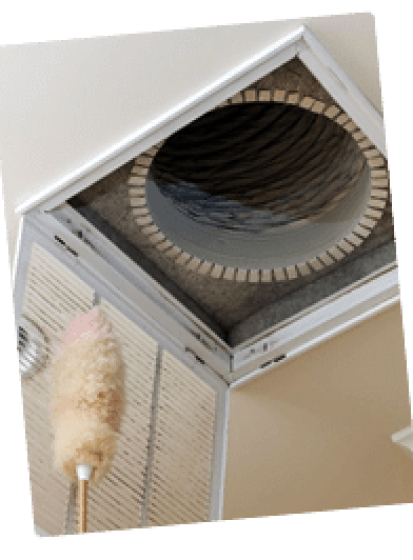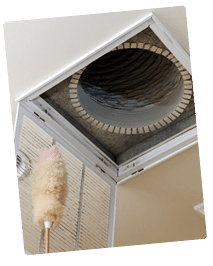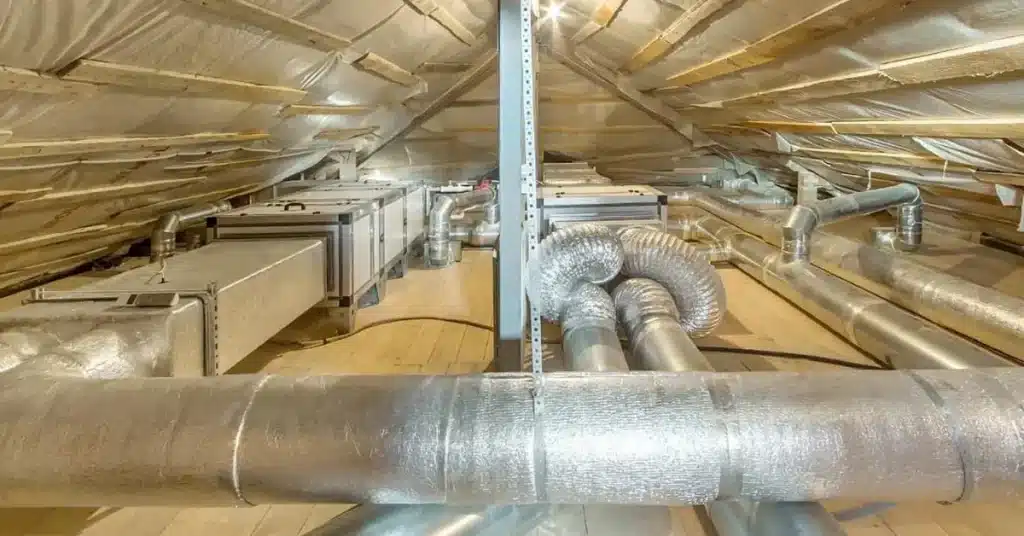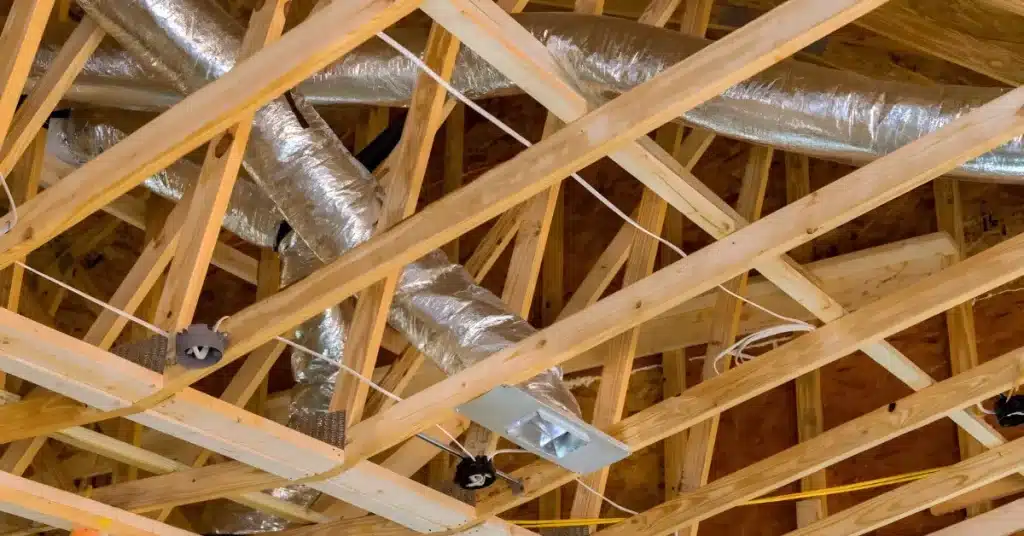Let’s talk about something that costs homeowners thousands in wasted energy every year. Your attic ductwork might be the biggest energy vampire in your home. Most people never think about those metal tubes running through their hot, dusty attic. But when your duct system isn’t properly protected, you’re basically throwing money out the window.

Why Attic Ductwork in Unconditioned Spaces Matters

Your unconditioned attic gets crazy hot in summer and freezing cold in winter. When conditioned air flows through unprotected air ducts up there, it loses its temperature fast. Think about it – you’re trying to push cool air through metal sitting in a 140-degree attic space. That’s like trying to keep ice cream cold in an oven. The HVAC system works overtime just to keep your house comfortable.
Attic ductwork without proper protection can lose up to 30% of its heating and cooling power. Those air leaks and temperature changes mean your furnace and air conditioner run constantly. Your HVAC equipment wears out faster, and your energy bills skyrocket. Plus, condensation forms on cold ducts in summer, which can damage your attic floor and create moisture problems.
Ways to Improve Ducts in an Unconditioned Attic
Insulate and Bury Ducts in Attic Insulation
The simplest way to protect attic ductwork is adding attic insulation around it. You want to insulate and then bury ducts completely under cellulose insulation or fiberglass. This creates a thermal blanket that keeps your conditioned air at the right temperature. Make sure to seal all connections first – even tiny gaps cause major energy loss.
Here’s what works best for insulated ducts:
- Add R-8 or higher insulation levels directly on the duct system
- Cover with at least 3 inches of blown cellulose
- Check airflow isn't restricted by compression
- Verify your air handler connections stay accessible
Using Foam and Vapor Barrier Solutions
Spray foam changes the game for attic ductwork protection. You can encapsulate the entire system with closed-cell spray foam. This approach creates an airtight seal that stops every leak. The foam acts as both insulation and a vapor barrier, preventing moisture problems completely.
Closed-cell foam costs more upfront but pays for itself quickly. It’s perfect for flex duct systems and tricky running ductwork paths. Some contractors combine spray foam at joints with traditional wrapping for the straight runs.

Vented Attic vs. Conditioned Space Options
Sometimes the best solution is changing the attic itself. Converting to a conditioned space means your attic ductwork stays in comfortable temperatures year-round. You move the insulation to the roof deck and seal and insulate the entire area. Your HVAC ducts now run through basically indoor space.
Not everyone can convert their attic though. Older homes with complex vent systems might need to stay vented. In these cases, focus on maximizing your duct work protection. Quality matters more than quantity here – better to do half your ducts in the attic perfectly than all of them poorly.
Making Your Attic Duct Work More Efficient
Smart attic ductwork improvements boost energy efficiency and indoor air quality together. When you put ducts in the right spots and protect them properly, everything works better. Your heating and cooling bills drop, your air conditioning runs less, and your home stays more comfortable.
Start with the worst sections first. Check where your HVAC system loses the most energy. Fix those spots, then move to smaller issues. Remember, even small improvements to ductwork in attics make a real difference over time.
Frequently Asked Questions
How much does it cost to insulate attic ductwork?
Basic duct insulation runs $1,500-3,000 for most homes. Spray foam encapsulation costs more, usually $3,000-6,000. But you’ll save 20-30% on energy bills, so it pays for itself in 3-5 years. Get multiple quotes and ask about rebates.
Can I insulate my attic ducts myself?
Yes, wrapping ducts with fiberglass isn’t too hard for DIYers. You’ll need duct wrap, foil tape, and mastic sealant. Seal all joints first, then wrap carefully without compressing insulation. Leave spray foam to pros though – it requires special equipment and training.
Should I replace old ductwork or just insulate it?
If ducts are over 15 years old or damaged, replacement might be smarter. New ducts with built-in insulation perform way better than patched old ones. But if your ducts are in decent shape, just adding insulation works great. Have an HVAC tech inspect them first.

